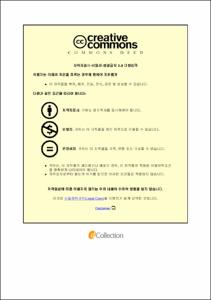Low level laser therapy with marine derived material for fibrosis treatment
- Alternative Title
- 섬유증 치료를 위한 해양 유래 물질 융합 저출력 레이저 치료법 연구
- Abstract
- 섬유증은 상처의 회복 과정이나 재형성 과정에서 세포 외 기질의 과도한 축적으로 형성된다. 섬유증은 신체의 거의 모든 부분에서 발생 할 수 있으며, 기관 및 조직의 기능을 저하하고 선진국 사망률의 절반에 병리학적 영향을 주는 흔한 질병이다. 현재까지 섬유증을 치료하기 위한 다양한 연구가 이루어졌지만, 아직 치료법이 부족하고 완치가 어려운 실정이다. 최근 저출력 레이저 치료 (low level laser therapy)가 다양한 의료 분야에서 적용되어 연구되고 있다. 저출력 레이저 치료란 가시광선 영역의 레이저를 낮은 출력으로 조사하여, 물리적인 손상 없이 생체 반응을 조절하는 방법이다. 저출력 레이저를 이용한 연구가 많이 이루어지고 있으나, 작용 기전이 명확하지 못할 뿐만 아니라 감소 및 억제 효과에 관한 연구 또한 부족한 실정이다. 따라서, 본 연구에서는 해양 유래 물질인 플로로글루시놀 (phloroglucinol)을 융합한 저출력 레이저의 섬유증 치료 효과와 그 가능성을 조사하였다. 생체 외 실험을 통해 플로로글루시놀 융합 저출력 레이저의 섬유화 인자 및 유도 인자의 발현 조절과 단독 치료보다 효과적인 감소 효과가 있음을 확인하였다. 또한, 동물 모델을 이용한 생체 내 실험을 통해 융합 치료 기술의 안전성과 유효성을 평가하고 섬유화 조직의 효과적인 감소 효과를 확인하였다. 결과적으로 해양 물질을 융합한 저출력 레이저 치료의 접근은 섬유증을 효과적으로 치료할 수 있고 현 치료법의 대안이 될 가능성이 있다. 나아가 섬유화 조절 효과의 더욱 명확한 기전과 후속 재발 방지를 위한 연구가 이루어져야 할 것으로 여겨진다.
- Issued Date
- 2020
- Awarded Date
- 2020. 2
- Type
- Dissertation
- Publisher
- 부경대학교
- Affiliation
- 부경대학교 대학원
- Department
- 대학원 의생명기계전기융합공학협동과정
- Advisor
- 강현욱
- Table Of Contents
- 1. Introduction 1
1.1. Fibrosis 1
1.2. Overview of low level laser therapy 4
2. Phloroglucinol-assisted low level laser therapy for fibrosis treatment 7
2.1. Purpose 7
2.2. Materials and methods 8
2.2.1. Cell culture and combined treatment 8
2.2.2. MTT and BrdU assay 11
2.2.3. Wound healing assay for cell migration 11
2.2.4. Confocal immunofluorescence 12
2.2.5. Western blot analysis and collagen assay 13
2.2.6. Statistical analysis 15
2.3. Results 16
2.3.1. Absorbance of phloroglucinol solution 16
2.3.2. Cell viability and proliferation 16
2.3.3. Comparison of wound closure rate 17
2.3.4. Gene expression of fibrotic markers 22
3. Effects of combined treatment of LLLT and phloroglucinol in a burn scar animal model 27
3.1. Purpose 27
3.2. Materials and methods 28
3.2.1. Fabrication of burn scar animal model 28
3.2.2. Laser and material treatment 29
3.2.3. Histological analysis 31
3.2.4. Statistical analysis 31
3.3. Results 32
3.3.1. Wound healing effect 32
3.3.2. Comparison of skin thickness and collagen distribution 35
4. Discussion 39
5. Summary 45
6. References 46
- Degree
- Master
- Appears in Collections:
- 대학원 > 의생명기계전기융합공학협동과정
- Files in This Item:
-
-
Download
 Low level laser therapy with marine derived material for fibrosis treatment.pdf
기타 데이터 / 1.53 MB / Adobe PDF
Low level laser therapy with marine derived material for fibrosis treatment.pdf
기타 데이터 / 1.53 MB / Adobe PDF
-
Items in Repository are protected by copyright, with all rights reserved, unless otherwise indicated.